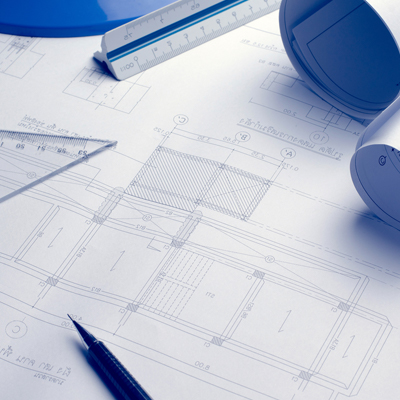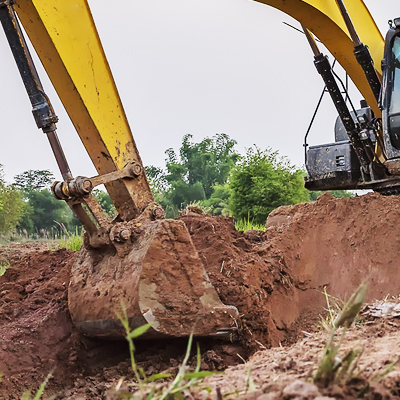Featured Projects
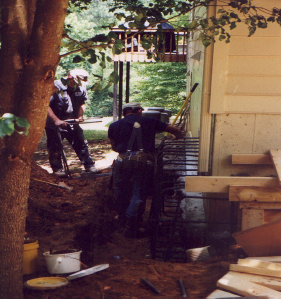 Gibson Grouting was hired to repair the foundation of a built over a trash pit. Our solution was to implement mini-pile foundation support and stabilize the trash pit.
Site Conditions:
The garage, crawl space and associated foundations were apparently built over a construction debris burial site, “Trash Pit” at the time of construction.
The structure had settled and damage had occurred. More extensive damage to the structure was eminent due to the trash continuing to decay. As the trash decays ground subsidence continues resulting in further foundation and slab settlement producing more severe structural damage.
Scope of Work Completed:
Install deep foundation support using mini-piles and stabilization of the trash pit. In accordance with the insurance company’s adjusting engineer’s report which concluded that seven mini-pile deep foundation supports would be installed and debris burial site compaction grouted. After mini-pile installation the structure can be re-leveled utilizing hydraulic lifting and laser leveling technologies.
To provide long term support of the mini-piles, building foundation and concrete slabs the trash pit and surrounding soils were compaction grouted. The grout pipes were installed on five foot centers in a checker board style pattern. Three thousand psi non-shrink, Portland cement based grout was injected under pressure to fill the voids in the trash pit and compact the surrounding soils to provide a firm stable mass.
The project was concluded on time and within the budget constraints set forth by the home owner’s insurance company who paid for the remediation.
If you have a trash pit or think you have one under your home and it is giving you problems call us. You will be glad you did.
Gibson Grouting was hired to repair the foundation of a built over a trash pit. Our solution was to implement mini-pile foundation support and stabilize the trash pit.
Site Conditions:
The garage, crawl space and associated foundations were apparently built over a construction debris burial site, “Trash Pit” at the time of construction.
The structure had settled and damage had occurred. More extensive damage to the structure was eminent due to the trash continuing to decay. As the trash decays ground subsidence continues resulting in further foundation and slab settlement producing more severe structural damage.
Scope of Work Completed:
Install deep foundation support using mini-piles and stabilization of the trash pit. In accordance with the insurance company’s adjusting engineer’s report which concluded that seven mini-pile deep foundation supports would be installed and debris burial site compaction grouted. After mini-pile installation the structure can be re-leveled utilizing hydraulic lifting and laser leveling technologies.
To provide long term support of the mini-piles, building foundation and concrete slabs the trash pit and surrounding soils were compaction grouted. The grout pipes were installed on five foot centers in a checker board style pattern. Three thousand psi non-shrink, Portland cement based grout was injected under pressure to fill the voids in the trash pit and compact the surrounding soils to provide a firm stable mass.
The project was concluded on time and within the budget constraints set forth by the home owner’s insurance company who paid for the remediation.
If you have a trash pit or think you have one under your home and it is giving you problems call us. You will be glad you did.
Residential Foundation Repair
Gibson Grouting was hired to repair a residential foundation built over a trash pit.
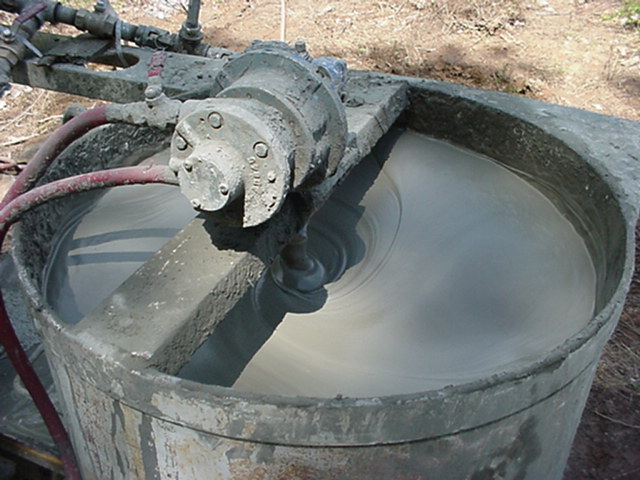 Cellular grout is an engineered portland cement slurry combined with precise amounts of density controlled foam. The portland cement slurry and foam are mixed producing a lightweight mixture containing uniformly distributed air cells.
In it’s rigid form it can be thought of as cement based grout having air as the aggregate. Density can be varied from 20-120 lb./ft3. Compressive strength ranges from 20 to 3,500 psi. are available.
Cellular grouting is becoming more and more commonly used and accepted within the engineering and construction community as a technology for filling voids. Some relevant applications include but are not limited to: pipe abandonment, voided slab fill, decommissioning and abandonment of underground tanks and structures, mine stabilization and abandonment, and annular space grouting.
Cellular grout is an engineered portland cement slurry combined with precise amounts of density controlled foam. The portland cement slurry and foam are mixed producing a lightweight mixture containing uniformly distributed air cells.
In it’s rigid form it can be thought of as cement based grout having air as the aggregate. Density can be varied from 20-120 lb./ft3. Compressive strength ranges from 20 to 3,500 psi. are available.
Cellular grouting is becoming more and more commonly used and accepted within the engineering and construction community as a technology for filling voids. Some relevant applications include but are not limited to: pipe abandonment, voided slab fill, decommissioning and abandonment of underground tanks and structures, mine stabilization and abandonment, and annular space grouting.
Cellular Grouting
Void Fill Solutions for a wide range of applications, please contact us for more information.
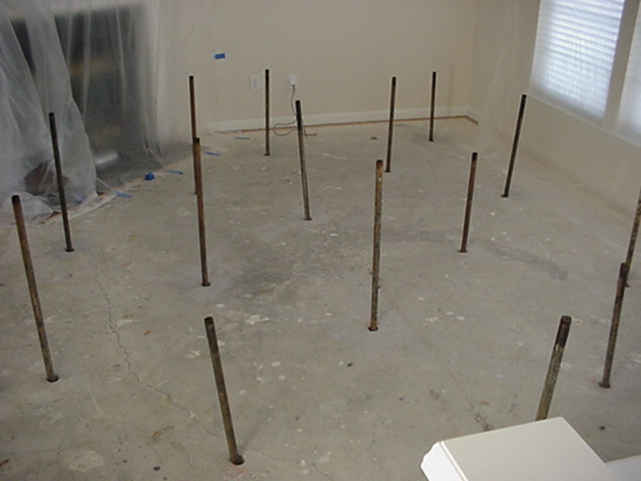 Cement Grouting is the injection of pumpable Portland cement based grout into a soil or rock formation to change the physical characteristics of the formation. Cement Grouting is the injection under pressure of cement or grout to fill voids or fractures in the soil, rock unit or concrete structure. Cement Grouting is a process by which cement is injected under pressure to fill fractures and voids in concrete structures.
Cement Grouting / injection of grout, under pressure, into rock fractures will improve the stability of the rock formation; Provide pre-construction site improvement; Arrest foundation settlements; Stop rocking slabs in warehouses; Repair fractures in machine bases; Rectify sinkhole problems; Lift and level slabs and foundations; Control soft-ground settlements in granular soils.
Cement Grouting is the injection of pumpable Portland cement based grout into a soil or rock formation to change the physical characteristics of the formation. Cement Grouting is the injection under pressure of cement or grout to fill voids or fractures in the soil, rock unit or concrete structure. Cement Grouting is a process by which cement is injected under pressure to fill fractures and voids in concrete structures.
Cement Grouting / injection of grout, under pressure, into rock fractures will improve the stability of the rock formation; Provide pre-construction site improvement; Arrest foundation settlements; Stop rocking slabs in warehouses; Repair fractures in machine bases; Rectify sinkhole problems; Lift and level slabs and foundations; Control soft-ground settlements in granular soils.
Cement Grouting
Cement Grouting for stabilization and void fill solutions
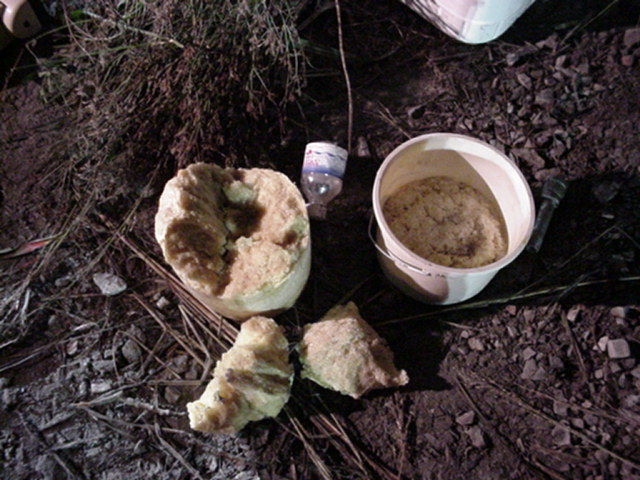 Chemical grouting is the introduction and permeation of chemical grout fluid into soils to produce stone like masses that are capable of carrying loads of the structures. Water control chemical grouting is the permeation of sandy, granular or gravel soils with chemical grouts that completely fill voids in order to control water flow. Chemical grouting is extensively used in leaking subterranean structures. Chemical grouting improves the strength and rigidity of the soil. Chemical grouting will also limit ground movement during excavation and construction.
Chemical grouting applications include, but are not limited to: For lagging operation, Support of footing, Grouted tunnel support, Pit excavation below water, Grouted cut-off wall, Grouted pipeline support
Chemical grouting is the introduction and permeation of chemical grout fluid into soils to produce stone like masses that are capable of carrying loads of the structures. Water control chemical grouting is the permeation of sandy, granular or gravel soils with chemical grouts that completely fill voids in order to control water flow. Chemical grouting is extensively used in leaking subterranean structures. Chemical grouting improves the strength and rigidity of the soil. Chemical grouting will also limit ground movement during excavation and construction.
Chemical grouting applications include, but are not limited to: For lagging operation, Support of footing, Grouted tunnel support, Pit excavation below water, Grouted cut-off wall, Grouted pipeline support
Chemical Grouting
Cost effective solutions for limited access excavation support and soil stabilization
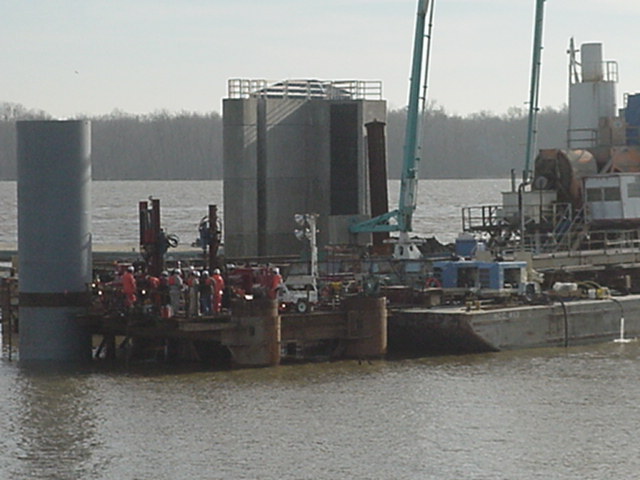 Grouting is the injection of pumpable materials into a soil or rock formation to change the physical characteristics of the formation. Compaction Grouting is the injection under pressure of cement or chemical grout to displace and compact soils in place. Compaction Grouting is a process by which cement or chemical grout can be injected under a structure that is tilting to level or raise it.
For example, if a large pillar were tilting to the side, a grout pipe could be installed under the low side of the pillar where the tilt was occurring. A mass of the grout could be injected under the structure that will basically act like a "hydraulic jack" under the pillar that will permanently pitch the pillar back to its original angle.
Compaction Grouting / injection of grout, under pressure, into the soil will improve its bearing capacity; Provide pre-construction site improvement; Arrest foundation settlements; Rectify sinkhole problems; Lift and level slabs and foundations; Control soft-ground settlements.
Grouting is the injection of pumpable materials into a soil or rock formation to change the physical characteristics of the formation. Compaction Grouting is the injection under pressure of cement or chemical grout to displace and compact soils in place. Compaction Grouting is a process by which cement or chemical grout can be injected under a structure that is tilting to level or raise it.
For example, if a large pillar were tilting to the side, a grout pipe could be installed under the low side of the pillar where the tilt was occurring. A mass of the grout could be injected under the structure that will basically act like a "hydraulic jack" under the pillar that will permanently pitch the pillar back to its original angle.
Compaction Grouting / injection of grout, under pressure, into the soil will improve its bearing capacity; Provide pre-construction site improvement; Arrest foundation settlements; Rectify sinkhole problems; Lift and level slabs and foundations; Control soft-ground settlements.
Compaction Grouting
Cost Effective solutions for improving unstable soil conditions
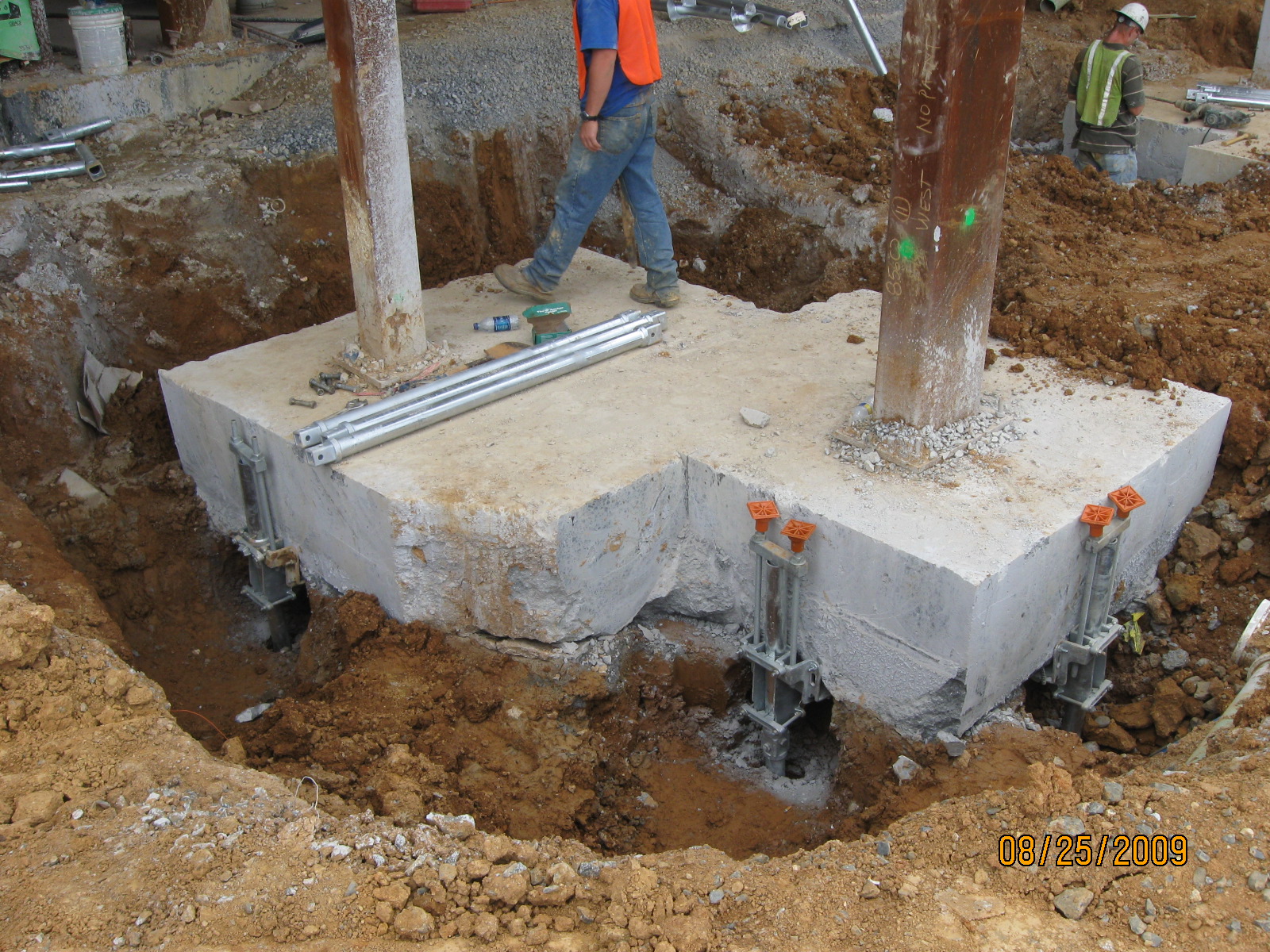 The MacLean Dixie Helical Pier System (HFS) offers a technically superior and extremely cost effective alternative to other remedial piering systems. It is backed by almost ninety (90) years of structural engineering experience.
This concept focuses upon screwing steel piers with single and multiple helixes into stable subsoil until the torque applied indicates that the necessary load capacity has been achieved.
Once necessary load capacity has been accomplished, adjustable brackets are attached to the base of foundation walls where the problem exists. They are then hydraulically jacked and locked into position with the weight of the wall now shifted to the installed piers.
The MacLean Dixie Helical Pier System, barely disturbs the landscape. Average residential structure problems usually are completed in less than two working days.
Gibson’s Pressure Grouting Service uses only MacLean Dixie helical anchoring systems for your underpinning and foundation support needs.
The MacLean Dixie Helical Pier System (HFS) offers a technically superior and extremely cost effective alternative to other remedial piering systems. It is backed by almost ninety (90) years of structural engineering experience.
This concept focuses upon screwing steel piers with single and multiple helixes into stable subsoil until the torque applied indicates that the necessary load capacity has been achieved.
Once necessary load capacity has been accomplished, adjustable brackets are attached to the base of foundation walls where the problem exists. They are then hydraulically jacked and locked into position with the weight of the wall now shifted to the installed piers.
The MacLean Dixie Helical Pier System, barely disturbs the landscape. Average residential structure problems usually are completed in less than two working days.
Gibson’s Pressure Grouting Service uses only MacLean Dixie helical anchoring systems for your underpinning and foundation support needs.
Helical Piers
Underpinning and Tieback Solutions using Helical Piers and Anchors
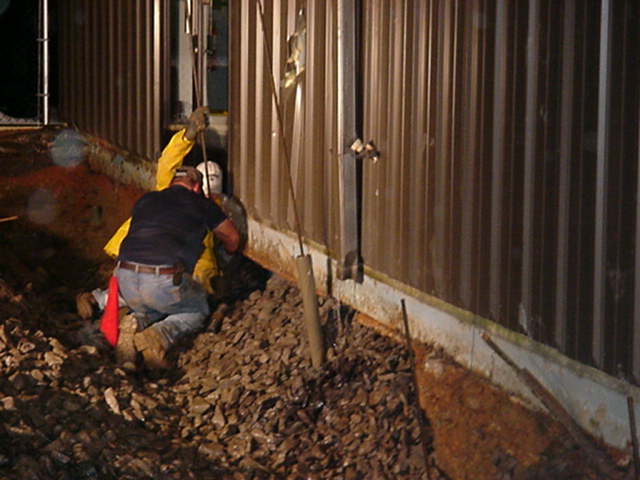 Gibson’s Pressure Grouting Service constructs and installs Mini-Piles. Mini-piles are structural supporting members that use state of the art drilling and materials technologies to install compression members which improve the stability and load bearing capacity of structures.
Gibson constructs mini-piles by drilling small diameter holes and constructing piles with high tensile steel and high compressive strength grouts to achieve tremendous load bearing capacities. Mini-piles are installed, designed and constructed to stabilize and carry a vertical load; a typical application would be for us to improve a column in a structure that is being renovated. The improved column will have increased bearing capacity of loads for which it was not originally designed.
Some of the equipment used to install mini-piles we have had specifically designed, engineered and constructed to operate in low head room situations. Our equipment allows us to install mini-piles inside of existing buildings, factories and tunnels.
Gibson’s Pressure Grouting Service constructs and installs Mini-Piles. Mini-piles are structural supporting members that use state of the art drilling and materials technologies to install compression members which improve the stability and load bearing capacity of structures.
Gibson constructs mini-piles by drilling small diameter holes and constructing piles with high tensile steel and high compressive strength grouts to achieve tremendous load bearing capacities. Mini-piles are installed, designed and constructed to stabilize and carry a vertical load; a typical application would be for us to improve a column in a structure that is being renovated. The improved column will have increased bearing capacity of loads for which it was not originally designed.
Some of the equipment used to install mini-piles we have had specifically designed, engineered and constructed to operate in low head room situations. Our equipment allows us to install mini-piles inside of existing buildings, factories and tunnels.
Micro Piles and Mini Piles
Gibson has the specialty equipment for all diamter pile applications
 Ground Anchors are used to address a number of situations with retaining walls, dry docks, coffer dams, water tanks, concrete gravity dams, tall buildings, Suspension bridges, towers, ski lifts, cliff or vertical cut stabilization, mine, pits, shafts, tunnels, underground caverns, pipeline and oil platforms. Some of these situations include direct tension, sliding, overturning, dynamic-loading, and ground prestressing. Anchors are used to resist uplift or overturning.
In the case of the screw anchor they can be used to resist compression loads and are used as piles too. The use of anchors is widespread for both temporary and permanent work. Typical anchor applications are to hold down slabs subjected to hydrostatic uplift, to increase the stability of a dam, or connected with guy wire to resist overturning of towers. Anchors are used because they are an economical way to provide resistance to vertical loads and are frequently far less expensive to install than the corresponding weight of concrete or to replace or rebuild the structure.
Permanent Ground Anchors are pre-stressed cement-grouted tendons used in soils or rock to restrain and control the displacements of structural elements such as walls or slabs. Ground anchor is essentially a vertical or lateral load-carrying element The element develops resisting force by stressing the soil around the anchorage length.
The screw anchor is a deep foundation member consisting of a steel shaft with helical plates welded to the shaft. Screw anchors are installed into the soil using mechanical rotational force, extensions are added to advance the assembly to achieve the desired tension or compressive force desired . Once installed, the anchor has bearing capacity in both tension and compression. Gibson’s Pressure Grouting Service utilizes a variety of anchoring systems to best serve your needs. Our experience with commercial, industrial, municipal, and residential projects has demonstrated that what works well in one situation may not necessarily work well in another. We here at Gibson will have our engineers work with you or your design team to determine what is the best and most cost effective anchor system for you.
Ground Anchors are used to address a number of situations with retaining walls, dry docks, coffer dams, water tanks, concrete gravity dams, tall buildings, Suspension bridges, towers, ski lifts, cliff or vertical cut stabilization, mine, pits, shafts, tunnels, underground caverns, pipeline and oil platforms. Some of these situations include direct tension, sliding, overturning, dynamic-loading, and ground prestressing. Anchors are used to resist uplift or overturning.
In the case of the screw anchor they can be used to resist compression loads and are used as piles too. The use of anchors is widespread for both temporary and permanent work. Typical anchor applications are to hold down slabs subjected to hydrostatic uplift, to increase the stability of a dam, or connected with guy wire to resist overturning of towers. Anchors are used because they are an economical way to provide resistance to vertical loads and are frequently far less expensive to install than the corresponding weight of concrete or to replace or rebuild the structure.
Permanent Ground Anchors are pre-stressed cement-grouted tendons used in soils or rock to restrain and control the displacements of structural elements such as walls or slabs. Ground anchor is essentially a vertical or lateral load-carrying element The element develops resisting force by stressing the soil around the anchorage length.
The screw anchor is a deep foundation member consisting of a steel shaft with helical plates welded to the shaft. Screw anchors are installed into the soil using mechanical rotational force, extensions are added to advance the assembly to achieve the desired tension or compressive force desired . Once installed, the anchor has bearing capacity in both tension and compression. Gibson’s Pressure Grouting Service utilizes a variety of anchoring systems to best serve your needs. Our experience with commercial, industrial, municipal, and residential projects has demonstrated that what works well in one situation may not necessarily work well in another. We here at Gibson will have our engineers work with you or your design team to determine what is the best and most cost effective anchor system for you.
Rock Anchors
Ground Anchors and Rock Anchors
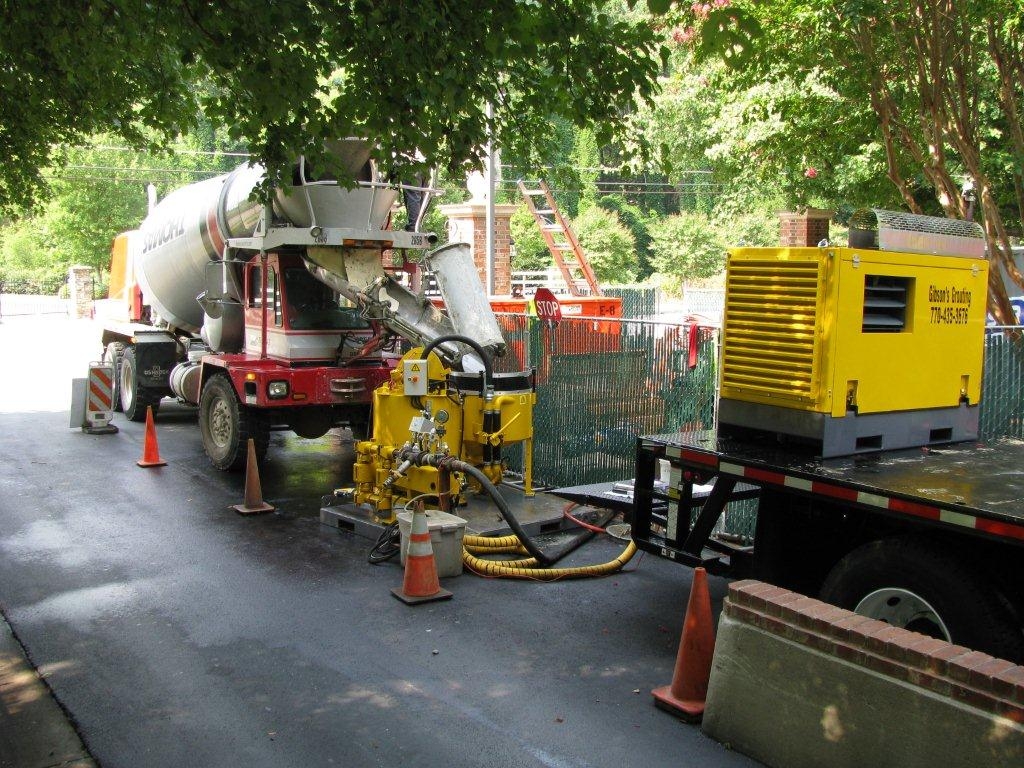 Serving the Southeast United States for twenty five years, Gibson’s Pressure Grouting Services, Inc. takes pride in our ability to offer top-quality, cost-effective, and practical solutions to both private and public sector clients.
Gibson provides turn key services. Call us with your problem. If you think you need underpinning, soil nailing, tie-back walls, epoxy injection, void filling, cement, chemical, compaction or pressure grouting. Our work is always done with a professional expertise and friendly service.
Gibson applies expertise in project management to our geotechnical engineering, services; including site investigation; design of abatement solutions for problems with building foundations, tunnels, dams, sinkholes, and earth structures.
Gibson Provides Comprehensive Turn Key Services that Exceed Client Expectations. We create value for our clients by providing cost effective solutions that bring a competitive advantage to their business. Our objective is to meet our clients' needs of today and anticipate the challenges that they will face in the future.
Serving the Southeast United States for twenty five years, Gibson’s Pressure Grouting Services, Inc. takes pride in our ability to offer top-quality, cost-effective, and practical solutions to both private and public sector clients.
Gibson provides turn key services. Call us with your problem. If you think you need underpinning, soil nailing, tie-back walls, epoxy injection, void filling, cement, chemical, compaction or pressure grouting. Our work is always done with a professional expertise and friendly service.
Gibson applies expertise in project management to our geotechnical engineering, services; including site investigation; design of abatement solutions for problems with building foundations, tunnels, dams, sinkholes, and earth structures.
Gibson Provides Comprehensive Turn Key Services that Exceed Client Expectations. We create value for our clients by providing cost effective solutions that bring a competitive advantage to their business. Our objective is to meet our clients' needs of today and anticipate the challenges that they will face in the future.
Specialty Grouting
Turn Key Specialty Grouting Solutions
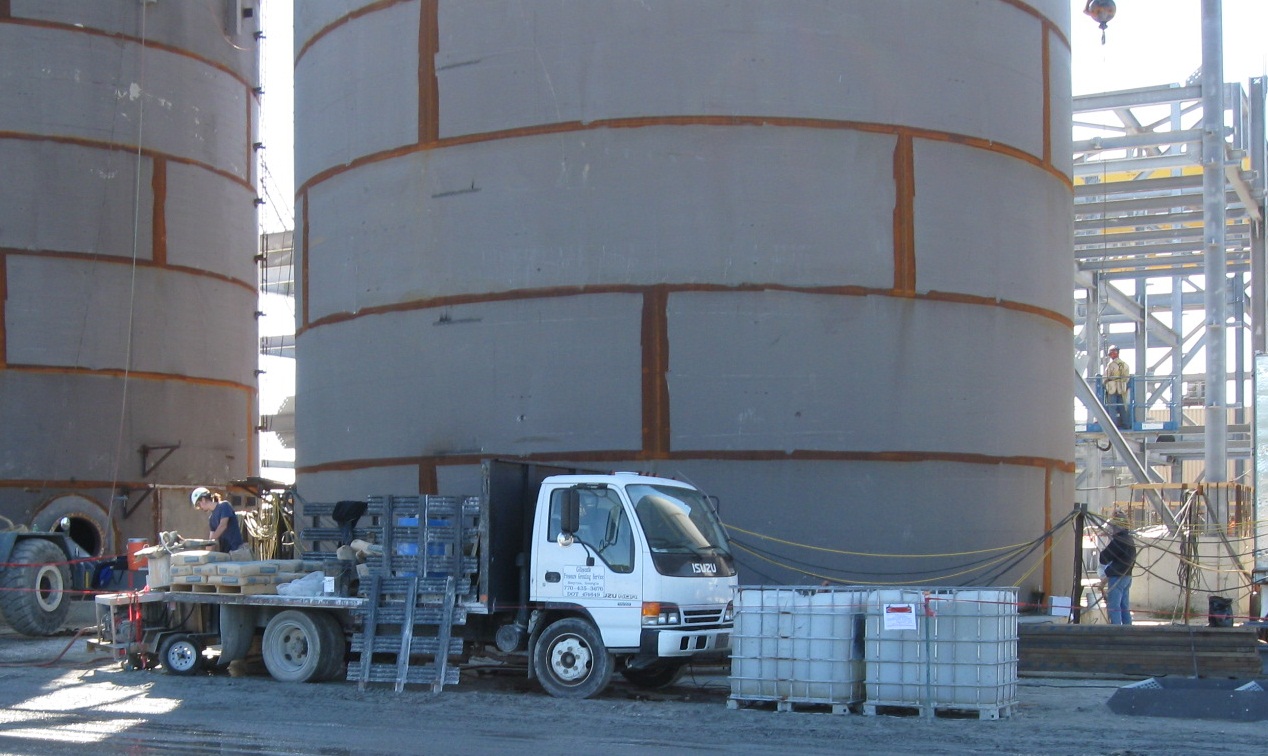 Tank Grouting projects typically consist of either tank bottom void fill grouting or tank foundation stabilization utilitizing a variety of different methods appropriate for the application.
Filling of voids is conducted in one of several ways depending upon a variety of factors. Some factors include: location of the water table, the size of the cavity, and its proximity to the surface.
Gibson’s Pressure Grouting Service specializes in filling voids. Our engineers and geologists will determine the best and most cost effective solution to rectify the situation.
Tank Grouting projects typically consist of either tank bottom void fill grouting or tank foundation stabilization utilitizing a variety of different methods appropriate for the application.
Filling of voids is conducted in one of several ways depending upon a variety of factors. Some factors include: location of the water table, the size of the cavity, and its proximity to the surface.
Gibson’s Pressure Grouting Service specializes in filling voids. Our engineers and geologists will determine the best and most cost effective solution to rectify the situation.
Tank Grouting
Filling voids and stabilizing foundations
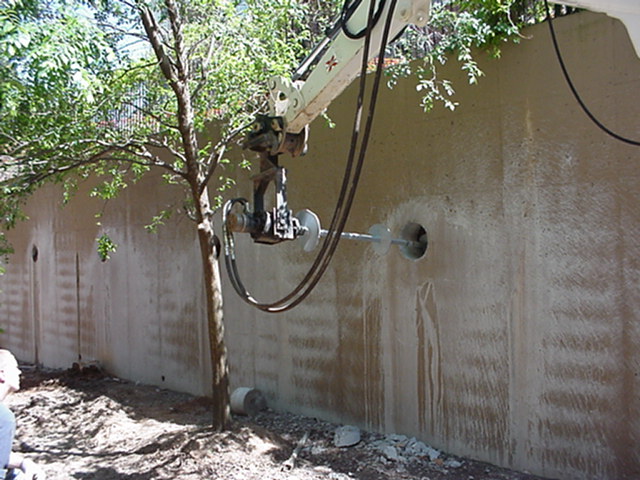 Tie Backs are used to address a number of situations with retaining walls, dry docks, coffer dams, water tanks, concrete gravity dams, tall buildings, Suspension bridges, towers, ski lifts, cliff or vertical cut stabilization, mine, pits, shafts, tunnels, underground caverns, pipeline and oil platforms. Some of these situations include direct tension, sliding, overturning, dynamic-loading, and ground prestressing.
Tie Backs are used to address a number of situations with retaining walls, dry docks, coffer dams, water tanks, concrete gravity dams, tall buildings, Suspension bridges, towers, ski lifts, cliff or vertical cut stabilization, mine, pits, shafts, tunnels, underground caverns, pipeline and oil platforms. Some of these situations include direct tension, sliding, overturning, dynamic-loading, and ground prestressing.
Tie Backs
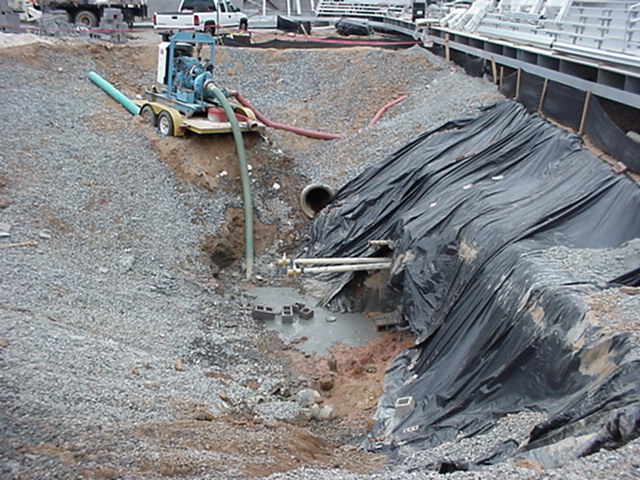 Damage to structures from void formation may be minimal to severe. These damages may include cracking in foundation walls and floor slabs, cracking of brick veneer, vertical displacement of the structure with severe tilting an inability to properly open and close doors and windows. Under extreme instances, complete structural failures can occur.
Filling of the void is conducted in one of several ways depending upon a variety of factors. Some factors include: location of the water table, the size of the cavity, and its proximity to the surface.
One common and simple technique used to stabilize the subsurface and prevent subsidence is using cement based Portland cement to fill the cavity below. This method employs the use of pneumatic or drilling equipment to install pipes that connect the surface to the void below. The pipes act as conduits to the subsurface void allowing grout to be installed. Grout pipes can be from 1-¼ inches up to 8 inches in diameter.
The size of the grout pipe is determined by several factors with the primary factors being grout mixture and placement volume desired. Once the grout pipe or pipes are in place it is a simple matter to fill the cavity. With the use of shut off valves and pressure gauges it is possible to determine when the cavity has been filled. Once the cavity has been filed the pumps and valves are turned off and the grout allowed to cure.
Other methods of filling voids include the use of chemical grouts and foams. Once the area has been located the void can be filled. Grout mixtures consistencies and additives are selected based on factors such as the size of the void to be filled, its location and proximity to other structures, and location of the water table.
Gibson’s Pressure Grouting Service specializes in filling voids. Our engineers and geologists will determine the best and most cost effective solution to rectify the situation.
Damage to structures from void formation may be minimal to severe. These damages may include cracking in foundation walls and floor slabs, cracking of brick veneer, vertical displacement of the structure with severe tilting an inability to properly open and close doors and windows. Under extreme instances, complete structural failures can occur.
Filling of the void is conducted in one of several ways depending upon a variety of factors. Some factors include: location of the water table, the size of the cavity, and its proximity to the surface.
One common and simple technique used to stabilize the subsurface and prevent subsidence is using cement based Portland cement to fill the cavity below. This method employs the use of pneumatic or drilling equipment to install pipes that connect the surface to the void below. The pipes act as conduits to the subsurface void allowing grout to be installed. Grout pipes can be from 1-¼ inches up to 8 inches in diameter.
The size of the grout pipe is determined by several factors with the primary factors being grout mixture and placement volume desired. Once the grout pipe or pipes are in place it is a simple matter to fill the cavity. With the use of shut off valves and pressure gauges it is possible to determine when the cavity has been filled. Once the cavity has been filed the pumps and valves are turned off and the grout allowed to cure.
Other methods of filling voids include the use of chemical grouts and foams. Once the area has been located the void can be filled. Grout mixtures consistencies and additives are selected based on factors such as the size of the void to be filled, its location and proximity to other structures, and location of the water table.
Gibson’s Pressure Grouting Service specializes in filling voids. Our engineers and geologists will determine the best and most cost effective solution to rectify the situation.
Void Fill Grouting

